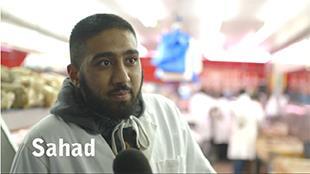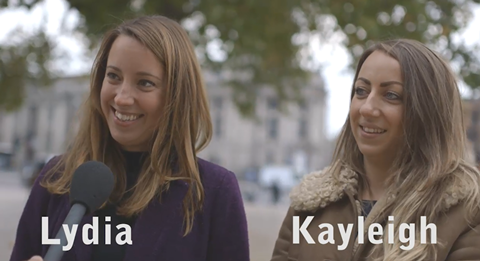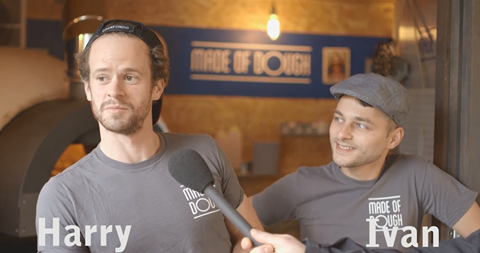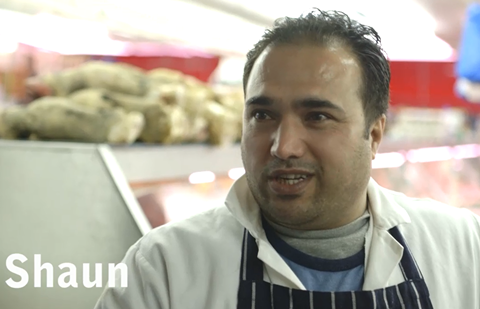Set in Brixton, London, this video lesson includes authentic interviews with people living in London talking to their friends about how well they know each other.
Seven ideas on how to use this video with your class
The following lesson ideas can be used alongside the video Live from London: How well do you know each other? You can use these ideas on their own, you could group some of the activities together and choose to do them in whichever order you prefer. Each lesson idea has a recommended learner level. The transcript is attached under ‘Downloads’ at the bottom of this page.
If you’re teaching teens, you can use these videos alongside the series Impressions. This video can be used with the lesson plan ‘How well do you know each other?’
Some of the ideas can be used for flipped lessons. In this scenario students can do tasks and preparatory work at home or in the school independently from the teacher for the following lesson. This allows more time for communicative tasks, teacher-led tasks or group-led tasks during class time.
1. Still image predictions
Level: Intermediate (B1) to upper intermediate (B2)
Summary: Students look at still images of friends to make predictions
Objective: to practise speaking; to practise making predictions
Instructions:
- How do you think they know each other?
- Do you think they know each other well?
- Who do you think will know each other the most?
- Who do you think will know each other the least?
Discuss the questions as a whole class before playing the video to see how accurate the predictions were.
2. Moving image predictions
Level: Pre-intermediate (A2) to upper intermediate (B2)
Summary: Students watch the video of the friends and make predictions
Objective: to practise speaking; to practise making predictions
Instructions:
3. True or false questions
Level: Pre-intermediate (A2) to intermediate (B1)
Summary: Students are given a list of true or false statements about the video.
Objective: to listen for specific information
Flipped: Students can prepare their true and false statements outside of class – see additional ideas.
Instructions:
- Kayleigh and Lydia met at school [F] They met at uni (university)
- They’ve known each other nine years [T]
- Kayleigh likes Motown music [T]
- Kayleigh and Lydia would go to Cuba together [T]
- Harry and Ivan are work colleagues [T]
- Harry likes heavy metal music [F] He likes classic rock
- Sahad likes rap music [T]
- Shaun’s favourite food is pizza [F] His favourite food is chicken
- Sahad would choose Italy as his favourite place to visit [F] He would choose Cuba
- Sahad likes Italy because he likes mafia films [F] He likes Cuba because he likes the film ‘Scarface’
You can either write them up on the board or create your own handout. You may wish to change the order of the statements to make it more challenging or even using the transcript you may wish to make your own true/false statements.
Additional idea: ask your students to write their own true and false statements about a close friend or family member.
4. Themed discussion
Level: Pre-intermediate (A2) to intermediate (B1)
Summary: Students use the main questions from the video and additional questions as a basis for a personalised discussion about how well they know their friends.
Objectives: to provide the opportunity for an open discussion; to practise spoken fluency.
Flipped: Your students could do the preparatory work independently and prepare answers to bring to class the following day.
Instructions: Place your students into pairs or small groups for this activity. Before playing the video tell your students that Luke, the presenter/interviewer in the video, asks people about how well they know each other. Ask your students to note down all the questions they hear in the video. Explain that there are four questions (see list below). Note that the questions are often asked in slightly different ways.
- What’s your friend’s favourite music?
- What do you think your friend’s favourite music is?
- What’s his or her favourite colour?
- If you could choose to go to three different countries, being Cuba, Australia or Italy, where would your friend go?
Place your students in groups of three and ask one student to do the interviews with the other two students separately. Once completed, ask the interviewer to feedback to the rest of the class about how well their group know each other. As the teacher you could ask the whole class to make predictions about who will know each other the most/least.
5. How well do you know each other survey
Level: Pre-intermediate (A2) to upper intermediate (B2)
Summary: Outside of the class students go and talk to fellow students in their school or meet people in the real world or surrounding area to see how well people know each other.
Objective: to engage students; to practise note-taking; to encourage speaking
Flipped: Preparation for the lesson can be done to bring to class the following day.
Instructions: Play the video to your students as a warmer without instruction. After your students have watched the video explain that they now have a task to do outside of the classroom.
6. Cut up video
Level: Pre-intermediate (A2) to upper intermediate (B2)
Summary: Students are divided into three groups to watch each pair of interviewees.
Objective: to practise reported speech; to practise note-taking skills
Instructions:
- Ask all A’s to stay in the class to watch the section of the video with Lydia and Kayleigh. Whilst they watch they have to make notes about the pair, how well they know each other, what they say, look like, how they act etc. Ask groups B & C to wait outside the classroom.
- Repeat the above with B students watching Harry and Ivan.
- Repeat the above with C students watching Sahad and Shaun
When all the students have watched their own section place them back into their original group of three to discuss what they learn.
Finally, play the whole video one more time to consolidate their notes and shared findings.
7. Abbreviations

Level: Pre-intermediate (A2) to upper intermediate (B2)
Summary: Students watch the video, listening out for any spoken abbreviations.
Objective: to focus on abbreviations; to practise listening for specific information
Instructions:
e.g. MIA is an abbreviation for missing in action
Tell your students to listen out for any abbreviations they hear in the first section ‘Lydia and Kayleigh’.
- Two common abbreviations are used by the friends: uni- (short for university) and cos- (short for because).
Now teach the following further examples:
- ta = thanks
- yep / yeah = yes
- footy = football
- cuppa = cup of tea
- bruv = brother
- mare = nightmare
- comfy = comfortable
- gonna = going to
- laters = see you later
Start by writing the abbreviation and asking your students to work in pairs or small groups to work out the standard form. Once their lists are completed share the answers.
Finally, ask your students to turn their papers upside down or switch off their screens and feed them the standard form and ask them to change it into the abbreviated form.
Additional idea: i
Downloads
Click link to download and view these filesLive from London: How well do you know each other? — Worksheet
Word, Size 0.15 mbLive from London: How well do you know each other? — Video
Video, Size 97.57 mbLive from London: How well do you know each other? — Transcript
Word, Size 0.15 mb
Topics
- Adults
- B1
- B2
- British English
- C1
- Celebrations / Holidays / Festivals
- Clothes
- Crafts & Projects
- Culture
- Drink
- Economics
- Education
- ESP
- Facts
- Festivals
- Film & TV
- Food
- Geography & Places
- Health & Well-being
- History
- Integrated Skills
- Intermediate
- Leisure
- Listening
- Mixed Ability
- Nature
- People & Individuals
- Politics
- Pre-Intermediate
- Science
- Shopping
- Social Media
- Sport
- Technology
- Teenagers
- Travel
- Up to 45 mins
- Up to 60 mins
- Upper-Intermediate
- Video
Live from … authentic video lessons

A series of innovative video lessons featuring authentic interviews. We went out and about in London asking members of the public a series of questions and recorded their answers. Each video comes with a set of lesson ideas plus a worksheet with a transcript of each interview for you to ...
- 1
- 2
- 3
- 4
- 5
- 6
- 7
- 8
- 9
- Currently reading
Live from London: How well do you know each other?
- 11
- 12
- 13
- 14
- 15





























No comments yet